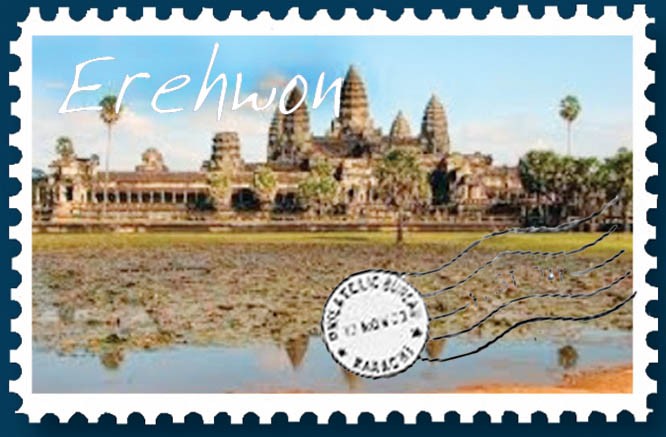
A visit at this ancient site in Combodia and the adjoining Kulen range of tropical forested mountains

Travelling eastwards from Pakistan it is monsoon but the weather is changing. Everyone in Cambodia, where I am on a working trip, conveys the change in weather. It is 5 am and I’m walking to follow a queue of hundreds of visitors into the Angkor Wat temple in Siem Reap Province. We appear to be a long line of army ants in relation to the grandeur of the temple complex.
Angkor Wat is one of the world’s largest religious complexes and its stone edifice is oriented to the cardinal points with an entrance facing precisely west. The rising sun behind the temple has displayed five different shades of colour on most mornings of its 1,000 years of existence. Framed in glory every morning, Angkor is like a supernatural apparition with its five crenellated towers.
I see glimmering streaks of apricot against a pearly grey morning sky reflecting in Angkor’s expansive moat. The streaks show through the sky like peelings of silk floating on water.
The moat has fascinated me because of its size and majestic framing in perfect geometry to the temple complex. It is as if Angkor is floating in a river as an island temple.
Perhaps the water was meant to protect Angkor Wat from invaders like its contemporaries in medieval Europe. But we also know that more than anything, the moat is a symbol like the rest of this assemblage of rock-hewn buildings. Its water symbolises the cosmic ocean in which all of creation is floating according to Hindu cosmology.
The temple complex speaks to anyone who still remembers the language of symbols: Hindu, Buddhist, Muslim or animist. It says almost the same thing to anyone who walks into it. Enter into the cosmos as a sentient being and know that all in Nature is alive and that you are deeply part of it. Live your life in goodness and you will climb the mount of your highest possibilities and in this way transcend your lower nature.
A city thought to be inhabited by two million people in the tenth century, Angkor appears to be all rock, but it is a city of water. Four major reservoirs stored water for a system of canals, dykes and moats. One of these reservoirs, known as the Baray (or water reservoir in the Khmer language) of Lolei, is said to be 12.5 square kilometres and contained 7.5 million cubic metres of water at one point in time. Now it is all but dry.
Springwater channelled from the adjoining Kulen range of tropical forested mountains was collected here centuries ago. In fact, Kulen is still the name of Cambodia’s most popular bottled water and is still thought of as a sacred mountain of the country.
This morning I stroll into the magnificent temple complex as the dawn darkness turns to first light. A crowd has arranged itself around one of the two water pools outside the inner temple whose reflection creates a mirror image of the buildings.
The pool today is a large pond, with half a dozen clusters of water lilies that are opening magenta-pink flowers in the sunrise. Looking directly at the façade of Angkor, clusters of people from the world over sit hushed, with cameras poised, waiting for the sun’s rays. Out of the thin sheet of white clouds, light glows faintly, but today there are no dramatic colours to transform the scene. It is just one of those grey monsoon days, and the pond is luminous but not colourful.
This once watery landscape is now beginning to dry up. The monsoon does not oblige with regular rain. My field-work in Kulen mountain behind Angkor Wat took me deep into the tropical forest where local communities are being starved of water. It could be that climate change is at work here, but more ominously, the great tropical hardwood trees of Kulen mountain are mostly gone. For centuries wooden pillars, houses, Buddha statues have adorned this capital of the Khmer Kingdom. Imagine thousands and thousands of wooden structures and statues. And if that was not enough, rapacious governments in the past half-century have allowed phases of forest concessions that enable the logging of mature trees.
Today Kulen is a National Park and looks lush green and tropical. As an ecologist though, I know that this is a secondary forest that grows up as colonisers when the primary, undisturbed ancient forest is removed. With this removal, the last of the elephants and Asian tigers also left Kulen in the 1980s. It is as if the spirit of this forest has gone. Some shards here and there are all that remain.
It is disturbing to see a dusty tropical forest. A red dust cloud rises behind every vehicle that brings visitors because the soil is parched. At this rate, the forest dwellers will have to leave and become ecological migrants away from the heart of the once legendary Khmer kingdom of Angkor.